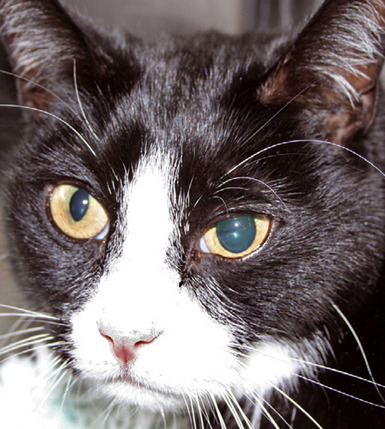

Cats with liver or kidney problems often lose their appetite, but usually have increased thirst. Cats that have some metabolic diseases such as hyperthyroidism or diabetes mellitus may have a hearty appetite and increased thirst. Cats with dental disease may seem to be picky about their food. Since sick cats may eat less or eat more, or may have more or less thirst than usual, any change in appetite or thirst may be of concern. If this is the situation, the removal of the medication should stop the pupil issue. In some cases, a medication will be found to cause unequal pupils. Common issues and their recommended treatments are listed below. Severity of underlying issues range from harmless to life-threatening. Treatment Of Unequal Pupil Size In CatsĪs unequal pupils are often the sign of an underlying issue, treatment depends on the issue and not the condition of the pupils themselves. Cats may also develop anisocoria due to spastic pupil syndrome, which is associated with the feline leukemia virus. When pupils are different sizes, it can indicate that your cat is suffering from one of the following issues: a brain injury due to trauma an injury to the surface of the eye a problem with the nerves running to the affected eye glaucoma, a very painful pressure buildup in the eye inflammation of the interior of the eye retinal disease or even cancer. If anisocoria occurs suddenly, you should consider this an emergency situation and seek veterinary care immediately to lessen the chance that your cats vision will be permanently affected, Cheryl Yuill, DVM, MSc, CVH, writes in an article on anisocoria in cats for the VCA. Anisocoria is a symptom, not a disease itself. When one of the pupils is larger than the other, your cat has a condition called anisocoria. Recommended Reading: Croton Poisonous To Dogs What If The Cat Pupils Are Different Sizes Regardless if a cat’s nictitating membrane is observed in one eye or two, you should take them to the vet for evaluation. As we have stated above, cancer is a possible cause of protrusion in the third eyelid, but this is relatively rare. It could be a piece of dust which has lodged within or even something hitting it. This would explain why it is visible in one eye and not the other.

If a cat third eyelid showing in one eye is observed, it could be some direct damage to this membrane. This implies the progression of one of the causes listed above. It might be that you see a cat’s third eyelid showing in one eye which progresses to both. It may imply a problem on one side of the body, but it still means there is an issue which needs resolving. The latter, if caused by the chlamydia bacteria, can be contagious to humans.Īs a note, if a cat’s inner eyelid is showing in one eye and not the other, it is still a cause for concern. Read Also: Kitten Age In Human Years Diseases And Conditions Of The EyeĬats are subject to a number of the same conditions we sometimes have, including cataracts, glaucoma, and conjunctivitis. They will look not only at the eye but looking to rule out any other potential causes of large pupils. Your vet will perform a physical examination of your cat. If your cats eyes are persistently dilated and there doesnt appear to be an obvious cause, then it would be prudent to arrange a check-up with your veterinary surgeon. The pupil would likely be constricted rather than dilated. If the eye itself is painful it would usually only be the affected eye that is different. Persistently dilated pupils could be a clue that your cat is experiencing pain somewhere in its body. If The Pupil Remains Dilated For An Extended Period Of Time It Is Important To Rule Out Any Underlying Problems Vertical-slit pupils are most common among nocturnal predators that ambush their prey, according to the new research, published today (Aug. Have you ever wondered why your cat’s eyes have those creepy vertical slits for pupils? A new study suggests the reason may lie in cats’ preferred mode of hunting.


 0 kommentar(er)
0 kommentar(er)
